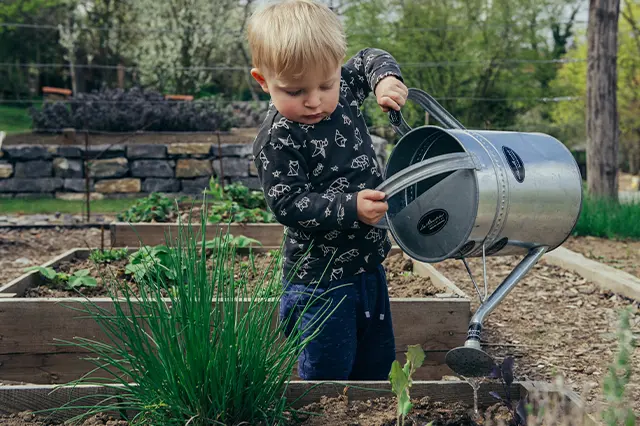
The Essential Guide To Shrub Care: Everything You Need To Know
Shrubs can be a beautiful addition to any garden or outdoor space, but they must be cared for properly in order to thrive. To help you do just that, we’ve put together this essential guide to shrub care. From planting and pruning tips to troubleshooting common issues, this guide will cover everything you need to know to keep your shrubs green, healthy and growing strong. Read on to discover what it takes to cultivate lush plants, vibrant blooms and stunning foliage all season long!
What is a shrub?
A shrub is a small to medium-sized woody plant that is typically shorter than a tree and has several main stems arising from the ground. Shrubs are a key component of many landscapes, providing structure and color throughout the year. Proper care is essential to keep shrubs looking their best.
This guide will cover everything you need to know about shrub care, including planting, pruning, fertilizing, and watering. By following these simple tips, you can ensure that your shrubs stay healthy and thrive for years to come.
The different types of shrubs
There are many different types of shrubs, and each type has its own unique care requirements. In this guide, we will cover the different types of shrubs and what you need to know to keep them healthy and looking their best.
The first type of shrub is the evergreen shrub. Evergreen shrubs are those that stay green all year long. They are perfect for providing year-round interest in the garden. Some common evergreen shrubs include azaleas, holly, and boxwood. When caring for evergreen shrubs, it is important to fertilize them in the spring and summer months. They should also be pruned in late winter or early spring before new growth begins.
The second type of shrub is the deciduous shrub. Deciduous shrubs are those that lose their leaves in the fall and remain dormant during the winter months. When they come back to life in the spring, they produce new leaves and flowers. Some common deciduous shrubs include hydrangeas, viburnums, and dogwoods. Deciduous shrubs should be fertilized in early spring before new growth begins. They can also be pruned in late winter or early spring if necessary.
No matter what type of shrub you have in your garden, proper care will ensure that it remains healthy and looks its best.
The benefits of shrub care
Shrub care is important for the health and beauty of your plants. There are many benefits to proper shrub care, including:
-Improved plant health
-Enhanced plant appearance
-Increased curb appeal
-Protection from pests and diseases
-Better resistance to extreme weather conditions
-Reduced maintenance costs
-Prevention of root rot and other soil-borne diseases
-Improved water retention and soil erosion control
-Reduced need for fertilizers and pesticides
Shrub care also promotes wildlife habitat and provides important food sources for birds and other beneficial insects. Properly maintained shrubs can also help provide privacy, screening, and reduce noise pollution.
The essential components of shrub care
If you want your shrubs to look their best, there are a few essential components of care that you’ll need to keep in mind. Here’s everything you need to know about shrub care:
– Watering: How much and how often to water your shrubs will vary depending on the species, but in general, they should be watered deeply and less frequently (about once a week). Be sure to check the soil before watering – if it’s still moist, you don’t need to water.
– Fertilizing: Most shrubs will benefit from a light application of fertilizer in the spring. Look for a fertilizer specifically formulated for shrubs, and follow the directions on the package.
– Pruning: Proper pruning is essential for keeping your shrubs healthy and looking their best. The best time to prune most shrubs is in late winter or early spring. Be sure to use sharp, clean pruning shears, and make cuts at a 45-degree angle just above an outward-facing bud.
– Mulching: Adding a 2-3 inch layer of mulch around shrubs helps to retain moisture and reduce weeds. Organic mulches, such as wood chips or bark, are best.
Following these simple steps will help keep your shrubs looking their best year-round!
How to care for your shrub
Shrubs are one of the most popular types of plants due to their hardiness and easy care. Although they don’t require a lot of attention, there are still some basic care guidelines you should follow to keep your shrub healthy and looking its best.
Watering: How often you need to water your shrub depends on the type of plant, the weather, and the soil conditions. Generally speaking, most shrubs need about 1”-2” of water per week. Water early in the day so the plant has time to dry off before nightfall. Overwatering can lead to root rot, so be sure not to water more than necessary.
Fertilizing: Fertilizing your shrub is important to help it maintain healthy growth. The type of fertilizer you use will depend on the type of plant you have. Most shrubs do well with a general purpose fertilizer that is applied once or twice a year. Follow the directions on the fertilizer package for proper application rates and frequency.
Pruning: Pruning is important for both aesthetic and health reasons. It helps promote new growth and can also help control the size and shape of your plant. The best time to prune most shrubs is in late winter or early spring before new growth begins. Be sure to use sharp pruning shears and make clean cuts at a 45-degree angle just above an outward facing bud or branch.
Mulching: Mulching around your shrub helps retain soil moisture and keep weeds away. Use a 2”-3” layer of mulch such as wood chips, shredded bark, or pine needles. Keep the mulch at least 6” away from the base of the plant to avoid damage to the roots.
Pests and Diseases: Regularly inspect your shrub for signs of pests or disease. If you notice any damage, take steps to remove or treat the problem as soon as possible. Common pests include aphids, spider mites, and scale insects. Common diseases are powdery mildew and root rot.
With proper care, your shrub should thrive for many years. Following these simple tips will help ensure that your shrub stays healthy and vigorous.
Shrub recipes
A shrub is a type of woody plant that is typically smaller than a tree and has multiple stems arising from the ground. Shrubs can be deciduous or evergreen, and many have flowers, leaves, and berries.
While shrubs are often used in landscaping, they can also be used in the kitchen! Shrub recipes are becoming increasingly popular as people discover the unique flavor profiles that these plants can bring to dishes.
Here are some tips for working with shrubs in the kitchen:
-Start with a small amount of shrub concentrate or syrup and add more to taste. Too much shrub can make a dish overly tart or acidic.
-Pair shrubs with complementary flavors. For example, match a fruity shrub with chicken or pork, or pair an herbal shrub with lamb or beef.
-Useshrubs to add acidity and brightness to soups, stews, and sauces. A little goes a long way!
-Experiment with different types of sugar to find the perfect balance of sweetness for your dish. Brown sugar, honey, and maple syrup all work well with shrubs.
-Make a shrub-based cocktail or mocktail to enjoy on a warm summer day.
-Infuse shrubs into yogurt or ice cream for a fun twist on dessert.
We hope these tips help you explore the delicious world of shrubs!
Conclusion
Shrub care may seem intimidating at first, but with the right knowledge and maintenance practices, it can be a cinch to keep your shrubs looking lush and healthy. We hope that our guide has given you an idea of what it takes to properly care for your shrubs so that they thrive in their environment. With regular watering, trimming, fertilizing, disease prevention and other related activities, you will soon have a garden full of beautiful and hardy shrubs that are sure to attract attention!

